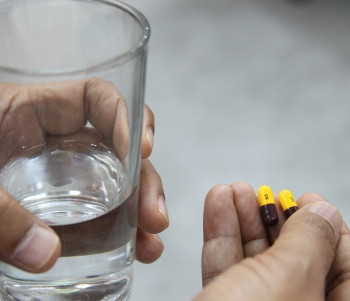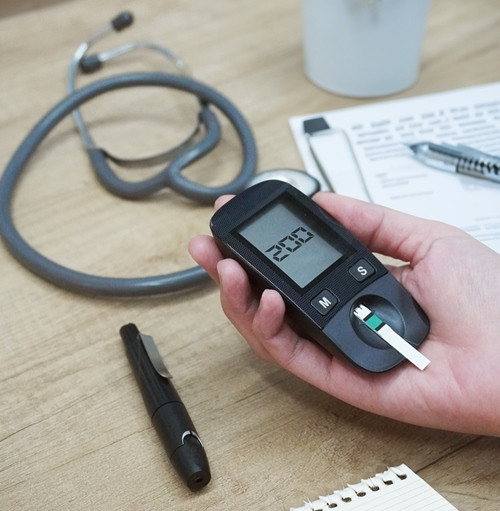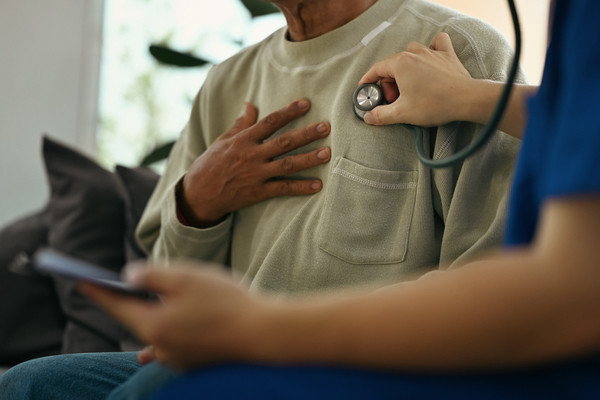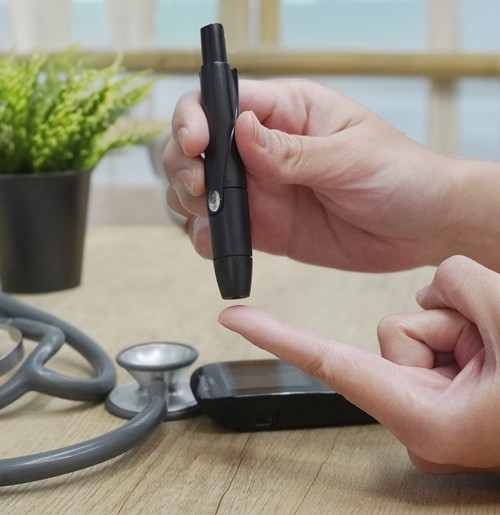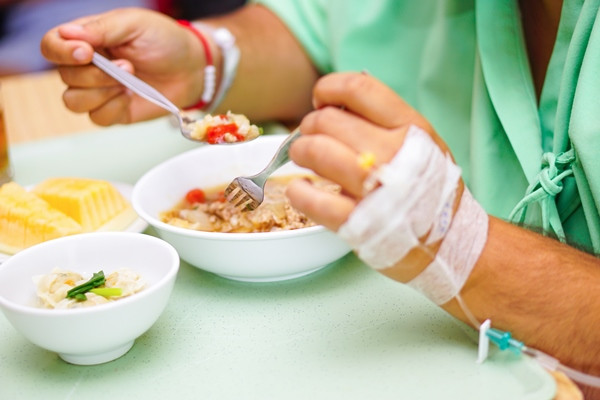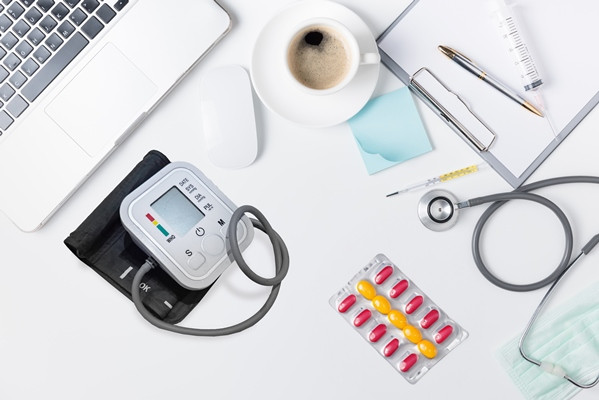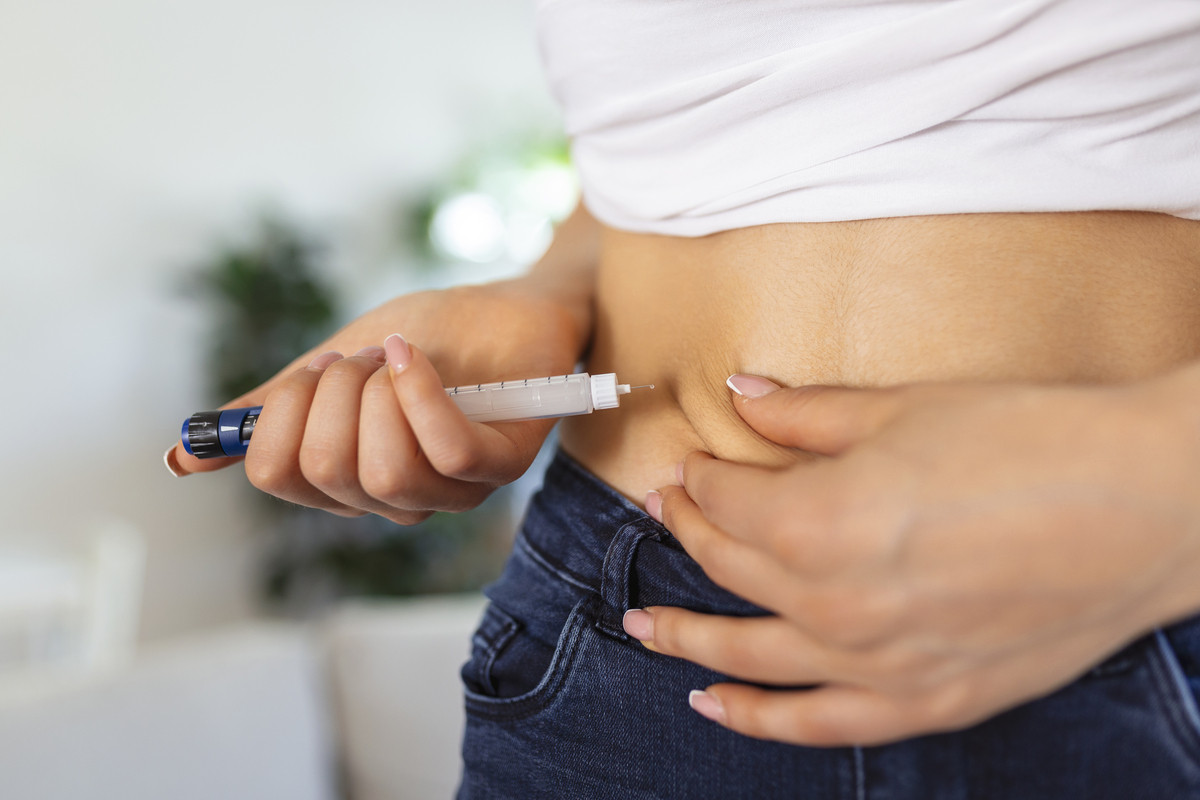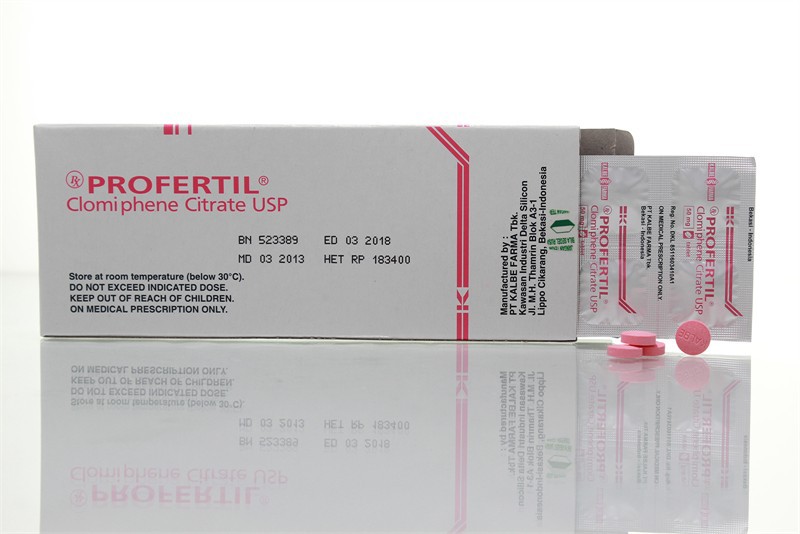Polycystic Ovary Syndrome (PCOS)
Pendahuluan dan Fakta
Polycystic Ovary Syndrome (PCOS) juga dikenal sebagai hyperandrogenic anovulation (HA), merupakan kelainan sistem endokrin yang menyebabkan gangguan kesuburan wanita usia reproduktif. Etiologi penyakit ini belum diketahui pasti. Penyakit ini termasuk oligogenik, yaitu dipengaruhi faktor genetik dan lingkungan; faktor genetik yang terlibat adalah X-Linked dominan.
Patofisiologi
Wanita dengan PCOS mengalami kelainan metabolisme androgen dan estrogen, sehingga terjadi peningkatan hormon testoteron, androstenedion, dan dehydroepiandrosterone sulfate (DHEAS). Ketidakseimbangan hormon pada PCOS juga erat kaitannya dengan hiperinsulinemia, resistensi insulin perifer, dan obesitas. Ciri-ciri ini berhubungan dengan hipersekresi luteinizing hormone (LH) dan androgen dengan konsentrasi serum follicle-stimulating hormone (FSH) rendah atau normal.
LH dibandingkan FSH mengganggu proses ovulasi karena menyebabkan perkembangan folikel tidak sempurna menjadikan morfologi ovarium polikistik. Gejala yang sering terjadi adalah siklus menstruasi yang panjang dan infertil. Namun, pada beberapa pasien mungkin didapatkan kadar hormon androgen yang normal.
Gejala Klinis dan Komplikasi
Manifestasi klinis PCOS bervariasi dari gangguan menstruasi ringan hingga gangguan fungsi reproduksi dan metabolisme.
Diagnosis
Wanita PCOS memiliki kecenderungan diabetes melitus tipe 2 atau kelainan kardiovaskular. Dalam National Institutes of Health (NIH) tahun 1990 menetapkan kriteria diagnosis PCOS. Rotterdam European Society for Human Reproduction/American Society of Reproductive Medicine (ASRM) melakukan revisi kriteria diagnosis tersebut di tahun 2003. Diagnosis PCOS harus memenuhi 2 dari 3 kriteria. Pada tahun 2006, Androgen Excess Society (AES) menyarankan bahwa kriteria NICHD/ NIHS dapat digunakan dengan modifikasi mencakup kriteria Rotterdam.
AES mendefinisikan PCOS sebagai gangguan yang terutama melibatkan kelebihan androgen, bersama berbagai kombinasi fitur fenotipik (seperti hiperandrogenemia, hirsutisme, oligo-ovulasi/ anovulasi, dan/ atau ovarium polikistik) yang dapat mendiagnosis lebih akurat.
a. Kriteria NICHD/NIH (1990); Memenuhi kedua kriteria:
- Oligo-ovulasi/anovulasi kronis
- Hiperandrogenemia dengan eksklusi kemungkinan lain seperti kelainan kongenital hiperplasia adrenal dan sindrom Cushing.
b. Kriteria ESHRE/ASRM Rotterdam (2003); Memenuhi 2 dari 3 kriteria:
- Hiperandrogenemia
- Oligo-ovulasi/anovulasi
- Ovarium polikistik dari hasil ultrasonografi. Tampak lebih dari 12 folikel berdiameter 2-9 mm atau peningkatan volume ovarium >10 mL
c. Kriteria Androgen Excess Society (AES) (2006); Memenuhi kedua kriteria:
- Oligo-ovulasi/anovulasi dan/atau ovarium polikistik dari hasil ultrasonografi.
- Gambaran klinis dan/atau laboratorium menunjukkan peningkatan hormon androgen
Tatalaksana dan Perawatan
1. Perubahan Gaya Hidup dan Nutrisi:
Perubahan gaya hidup merupakan langkah utama seperti pengaturan pola makan dan olahraga mengingat obesitas menjadi faktor pencetus resistensi insulin dan sindrom metabolik. Penurunan berat badan menurunkan sirkulasi androgen dan insulin, memperbaiki lipid dan meningkatkan FSH, sehingga mengurangi gejala fisik seperti hirsutisme, alopesia, jerawat, skin tags, menormalkan siklus menstruasi, dan menstimulasi ovulasi.
2. Pendekatan Farmakologi
- Anovulasi.
Clomiphene citrat masih menjadi pilihan terapi utama untuk menstimulasi ovulasi pada kasus PCOS. Dosis awal adalah 50 mg/hari selama 5 hari sejak haid hari ke-3. Bila terjadi ovulasi tetapi tidak terjadi pembuahan pada siklus pertama dosis masih bisa dilanjutkan 50 mg/ hari pada siklus berikutnya. Namun, bila pada siklus awal tidak terjadi ovulasi, pada siklus berikutnya dosis bisa dinaikkan menjadi 100 mg/hari. Peningkatan dosis ini juga berisiko memicu terjadinya resistensi clomiphene. Pemberian dapat diulang maksimal 6 siklus.
- Obat Antidiabetes
Resistensi insulin disertai hiperinsulinemia memiliki peran penting terhadap hiperandrogenemia dan resistensi insulin. Metformin secara signifikan mengurangi indeks massa tubuh (IMT) dengan dosis >1500 mg/ hari dan durasi pengobatan jangka panjang juga menunjukkan efek berkelanjutan pada penurunan berat badan >8 minggu.
- Aromatase Inhibitors
Aromatase inhibitor biasa digunakan sebagai terapi kanker payudara hormon responsif, dan telah dipelajari untuk menginduksi ovulasi pada PCOS; secara fungsional menekan produksi estrogen melalui stimulasi aksis hipotalamus-pituitari yang berimplikasi meningkatkan gonadotropin-releasing hormone (GnRH) dan follicle stimulating hormone (FSH).
- Kontrasepsi Oral
Regulasi pil KB mengatasi PCOS terutama dalam mengatur siklus menstruasi. Obat-obatan ini juga mengurangi hirsutisme, jerawat, dan kadar androgen. Kombinasi estrogen dan progestin adalah kontrasepsi oral primer yang digunakan dalam pengobatan hirsutisme dan jerawat yang berhubungan dengan PCOS.
- Obat Kategori Lainnya
Medroxyprogesterone acetate 5-10 mg/hari selama 10-14 hari setiap bulan bertujuan mengatasi pendarahan uterus disfungsional dan amenore pasien PCOS yang tidak berencana hamil.
3.Terapi Lini Kedua:
- Gonadotropin
Pemberian hormon gonadotropin eksogen, yaitu kombinasi follicle-stimulating hormone (FSH) atau human menopausal gonadotropin (HMG). Mekanisme kerja hormon gonadotropin adalah menstimulasi ovulasi dan memaksimalkan perkembangan folikel.
- Bedah Laparoskopi Ovarium
Bedah laparoskopi ovarium juga dipertimbangkan sebagai terapi lini kedua tetapi merupakan metode invasif dan memerlukan anastesi umum.
4. Terapi Lini Ketiga:
In vitro Fertilization (IVF). IVF merupakan pilihan bila terjadi kegagalan terapi lini pertama dan kedua. Biasanya IVF menjadi pilihan pada kelainan berat pada perempuan (endometriosis, obstruksi tuba, dan kelainan obstetri lain yang mengganggu kesuburan) dan laki-laki (azoospermia dan kelainan kesuburan pria)
5. Pengobatan Alternatif
Bebagai modalitas pengobatan alternatif antara lain kinesiologi, herbalisme, homeopati, refleksiologi, akupresur, akupuntur, induksi ovulasi, dan terapi pijat. Akupunktur merupakan modalitas yang paling umum dan terbukti dapat mengatur siklus menstruasi pasien PCOS, menurunkan berat badan, memperbaiki suasana hati, dan mengurangi nyeri kepala. Aplikasi jarum akupunktur dapat meningkatkan aliran darah, menstimulasi organ, berkontribusi menormalkan kadar hormon, dan meningkatkan fungsi sistem reproduksi.
Referensi: Ni Luh Putu Rustiari Dewi. Pendekatan terapi polycystic ovary syndrome (PCOS). Cermin Dunia Kedokteran [Internet]. 2020 [cited 2021 Aug 27];290:47(9):703-5.









